Europe · Regions · Spain · Western Europe
Andalusian insights: the spirit of Malaga in five “pueblos”
The province of Malaga on Spain’s southern Mediterranean coast evolved from a rich and varied past. A story beginning with pre-historic cave dwellers and ancient, nomadic tribes, Phoenician settlers, and Roman, Visigoth and Moorish conquerors ahead of the Christian “re-conquest”. The city of Malaga was founded nearly 3,000 years ago, making it one of the oldest established cities in the world.
 Renowned for its pretty white-washed villages and vibrant capital city, Malaga province offers a virtually endless scenic route for cultural and historical explorations. It’s no wonder that many of these villages have maze-like clusters of narrow, irregular streets, given that they were founded thousands of years ago. However, much of this can be attributed to the Moors during their reign of Al-Andaluz. Particularly in the villages nearest the Mediterranean, the confusing configuration of streets and alleyways were meant to deter and protect against sea faring raiders; meanwhile, the construction of tall buildings on narrow streets, as well as interior courtyards, are just a couple of their ingenious methods of keeping homes and passageways cool under the intense summer sun.
Today these characteristics make for some splendid walking routes where the fun lies in getting lost and finding your way back again. With just a little bit of knowledge on what to look for, these explorations reveal an immense trove of fascinating historical insight. Below are just five examples of Malagueñan pueblos that will enlighten the curious traveler.
1. Casares
On the western edge of Malaga Province, just 15 km from the Mediterranean coast, sits the picture perfect little village of Casares. Instantly recognisable for the historic cathedral and Medieval Arab castle rising from a craggy hilltop, the village itself seems to cling to the slopes, rising to meet these monuments at the top. The traditional white-washed buildings stacked higher and higher on top of one another like some impressionist painting. For a village of only about 3,000 inhabitants it has an incredible wealth of historical sites, all easily discovered whilst meandering through the streets en-route to the castle above – an imperative as much for a closer inspection as it is for the views over Gibraltar to the Moroccan coast. Yet, the village itself is so preciously pretty that you may prefer to lose yourself on the surrounding nature trails for a more distant perspective.
Renowned for its pretty white-washed villages and vibrant capital city, Malaga province offers a virtually endless scenic route for cultural and historical explorations. It’s no wonder that many of these villages have maze-like clusters of narrow, irregular streets, given that they were founded thousands of years ago. However, much of this can be attributed to the Moors during their reign of Al-Andaluz. Particularly in the villages nearest the Mediterranean, the confusing configuration of streets and alleyways were meant to deter and protect against sea faring raiders; meanwhile, the construction of tall buildings on narrow streets, as well as interior courtyards, are just a couple of their ingenious methods of keeping homes and passageways cool under the intense summer sun.
Today these characteristics make for some splendid walking routes where the fun lies in getting lost and finding your way back again. With just a little bit of knowledge on what to look for, these explorations reveal an immense trove of fascinating historical insight. Below are just five examples of Malagueñan pueblos that will enlighten the curious traveler.
1. Casares
On the western edge of Malaga Province, just 15 km from the Mediterranean coast, sits the picture perfect little village of Casares. Instantly recognisable for the historic cathedral and Medieval Arab castle rising from a craggy hilltop, the village itself seems to cling to the slopes, rising to meet these monuments at the top. The traditional white-washed buildings stacked higher and higher on top of one another like some impressionist painting. For a village of only about 3,000 inhabitants it has an incredible wealth of historical sites, all easily discovered whilst meandering through the streets en-route to the castle above – an imperative as much for a closer inspection as it is for the views over Gibraltar to the Moroccan coast. Yet, the village itself is so preciously pretty that you may prefer to lose yourself on the surrounding nature trails for a more distant perspective.
 2. Comares
The village of Comares sits perfectly perched atop a craggy hilltop at almost 740 metres high, exposing amazing views to the Mediterranean sea and the surrounding mountains. It is, in fact, so easy to get lost in this labyrinthine village that ceramic footprints have been placed along the narrow cobbled streets to help visitors find their way. A wander around will reveal various plaques graphically explaining Comares’ rich history, dating to at least the 3rd century B.C. and including the handover of the village from the Moors to the Catholic Kings in 1487, plus numerous architectural sites also evidencing its Roman and Medieval past. Less than 25km from the coast, Comares is quite accessible though remains somewhat off of the typical tourist route, making it even more quaint and enjoyable.
2. Comares
The village of Comares sits perfectly perched atop a craggy hilltop at almost 740 metres high, exposing amazing views to the Mediterranean sea and the surrounding mountains. It is, in fact, so easy to get lost in this labyrinthine village that ceramic footprints have been placed along the narrow cobbled streets to help visitors find their way. A wander around will reveal various plaques graphically explaining Comares’ rich history, dating to at least the 3rd century B.C. and including the handover of the village from the Moors to the Catholic Kings in 1487, plus numerous architectural sites also evidencing its Roman and Medieval past. Less than 25km from the coast, Comares is quite accessible though remains somewhat off of the typical tourist route, making it even more quaint and enjoyable.
 3. Canillas de Aceituno
Positioned on the slopes of La Maroma, the tallest mountain in the province at more than 2000m, and only about 10km from the sea as the crow flies, Canillas de Aceituno offers unique views and a calming atmosphere. The locals are friendly and welcoming to visitors, but not overly eager to develop tourism in a commercial capacity, keeping the village in touch with and connected to its past. For this it is all the more attractive to nature lovers and adventure seekers as well, with one of the primary trail heads leading from the village straight to the top of La Maroma and all through the expansive mountain nature reserve of the Sierra Tejeda. Although one of the final strongholds of the Moors in the region, evidence of the Moorish past in the village has largely been lost to time and conquest unless you know what to look for in the ancient aqueducts and water storage systems, hints of architectural remnants and the foundation of a long demolished castle. No visit to Canillas de Aceituno would be complete without sampling the roast kid, or “chivo lechal” for which the village is perhaps now most famous.
3. Canillas de Aceituno
Positioned on the slopes of La Maroma, the tallest mountain in the province at more than 2000m, and only about 10km from the sea as the crow flies, Canillas de Aceituno offers unique views and a calming atmosphere. The locals are friendly and welcoming to visitors, but not overly eager to develop tourism in a commercial capacity, keeping the village in touch with and connected to its past. For this it is all the more attractive to nature lovers and adventure seekers as well, with one of the primary trail heads leading from the village straight to the top of La Maroma and all through the expansive mountain nature reserve of the Sierra Tejeda. Although one of the final strongholds of the Moors in the region, evidence of the Moorish past in the village has largely been lost to time and conquest unless you know what to look for in the ancient aqueducts and water storage systems, hints of architectural remnants and the foundation of a long demolished castle. No visit to Canillas de Aceituno would be complete without sampling the roast kid, or “chivo lechal” for which the village is perhaps now most famous.
 4. Frigiliana
The quintessentially Axarquian village of Frigiliana, in the eastern most region of Malaga, is aimless wandering at its best. The maze of narrow pedestrian streets may open unexpectedly onto a plaza suddenly teaming with life, or lead you into an apparent dead end only to reveal a cluster of shops and tapas bars. All the while you will marvel at the intricately designed stone pavements and the explosions of floral colour hanging from proudly adorned balconies, window ledges and doorways. Once voted “prettiest village in Andalucia” by the Spanish tourism board, a darker tale explains that here was the final savage defeat of the Moorish uprising in 1569. The remains of the old Arab fort lie in ruins atop the hill at the site of the final battle, but the Moorish influence is more visible throughout the village still today. The must-see annual August festival of the “Three Cultures” celebrates a happier time of cooperation between the Jewish, Christian and Islamic communities that lived harmoniously there for centuries, as well as the lasting cultural and culinary legacies of these three groups in Frigiliana and Andalusia more broadly.
4. Frigiliana
The quintessentially Axarquian village of Frigiliana, in the eastern most region of Malaga, is aimless wandering at its best. The maze of narrow pedestrian streets may open unexpectedly onto a plaza suddenly teaming with life, or lead you into an apparent dead end only to reveal a cluster of shops and tapas bars. All the while you will marvel at the intricately designed stone pavements and the explosions of floral colour hanging from proudly adorned balconies, window ledges and doorways. Once voted “prettiest village in Andalucia” by the Spanish tourism board, a darker tale explains that here was the final savage defeat of the Moorish uprising in 1569. The remains of the old Arab fort lie in ruins atop the hill at the site of the final battle, but the Moorish influence is more visible throughout the village still today. The must-see annual August festival of the “Three Cultures” celebrates a happier time of cooperation between the Jewish, Christian and Islamic communities that lived harmoniously there for centuries, as well as the lasting cultural and culinary legacies of these three groups in Frigiliana and Andalusia more broadly.
 5. Maro
The coastal town of Maro is a wonderful example of a quaint Andalusian village that has not been spoilt by commercialism or the so-called progress of time. Maro sits just three kilometres from the popular and busier town of Nerja, offering virtually everything that Nerja offers, though without the same influx of tourists. The area was little known until 1959, when local youths discovered an expansive cave network complete with pre-historic cave paintings, and towering stalagmites and stalactites. Today the remarkable and jaw-dropping “Caves of Nerja” (belonging to Maro) are a major attraction for visitors, though most still never make their way into Maro itself.
5. Maro
The coastal town of Maro is a wonderful example of a quaint Andalusian village that has not been spoilt by commercialism or the so-called progress of time. Maro sits just three kilometres from the popular and busier town of Nerja, offering virtually everything that Nerja offers, though without the same influx of tourists. The area was little known until 1959, when local youths discovered an expansive cave network complete with pre-historic cave paintings, and towering stalagmites and stalactites. Today the remarkable and jaw-dropping “Caves of Nerja” (belonging to Maro) are a major attraction for visitors, though most still never make their way into Maro itself.
 The old 16th century sugar works and the 19th century Aguila Aqueduct are also notable sites in Maro. To the east of Maro, the coast is perfectly natural and unspoilt with cliffs falling into the sea and intermittent secluded beaches providing a quiet and beautiful haven for those who know how to find them.
The old 16th century sugar works and the 19th century Aguila Aqueduct are also notable sites in Maro. To the east of Maro, the coast is perfectly natural and unspoilt with cliffs falling into the sea and intermittent secluded beaches providing a quiet and beautiful haven for those who know how to find them.
 Alan Hazel is Owner and Director of Cortijo El Carligto. Cortijo el Carligto is a private Andalucían hideaway and luxury rental estate in the hills of Malaga, Spain, overlooking the Mediterranean.
If you would like to be a guest blogger on A Luxury Travel Blog in order to raise your profile, please contact us.
Alan Hazel is Owner and Director of Cortijo El Carligto. Cortijo el Carligto is a private Andalucían hideaway and luxury rental estate in the hills of Malaga, Spain, overlooking the Mediterranean.
If you would like to be a guest blogger on A Luxury Travel Blog in order to raise your profile, please contact us.
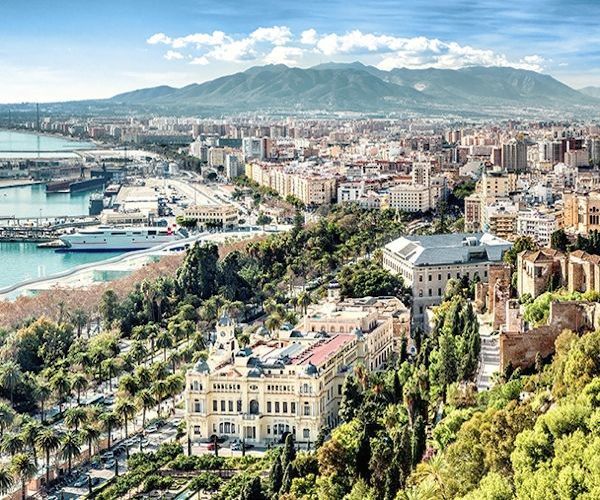 Renowned for its pretty white-washed villages and vibrant capital city, Malaga province offers a virtually endless scenic route for cultural and historical explorations. It’s no wonder that many of these villages have maze-like clusters of narrow, irregular streets, given that they were founded thousands of years ago. However, much of this can be attributed to the Moors during their reign of Al-Andaluz. Particularly in the villages nearest the Mediterranean, the confusing configuration of streets and alleyways were meant to deter and protect against sea faring raiders; meanwhile, the construction of tall buildings on narrow streets, as well as interior courtyards, are just a couple of their ingenious methods of keeping homes and passageways cool under the intense summer sun.
Today these characteristics make for some splendid walking routes where the fun lies in getting lost and finding your way back again. With just a little bit of knowledge on what to look for, these explorations reveal an immense trove of fascinating historical insight. Below are just five examples of Malagueñan pueblos that will enlighten the curious traveler.
1. Casares
On the western edge of Malaga Province, just 15 km from the Mediterranean coast, sits the picture perfect little village of Casares. Instantly recognisable for the historic cathedral and Medieval Arab castle rising from a craggy hilltop, the village itself seems to cling to the slopes, rising to meet these monuments at the top. The traditional white-washed buildings stacked higher and higher on top of one another like some impressionist painting. For a village of only about 3,000 inhabitants it has an incredible wealth of historical sites, all easily discovered whilst meandering through the streets en-route to the castle above – an imperative as much for a closer inspection as it is for the views over Gibraltar to the Moroccan coast. Yet, the village itself is so preciously pretty that you may prefer to lose yourself on the surrounding nature trails for a more distant perspective.
Renowned for its pretty white-washed villages and vibrant capital city, Malaga province offers a virtually endless scenic route for cultural and historical explorations. It’s no wonder that many of these villages have maze-like clusters of narrow, irregular streets, given that they were founded thousands of years ago. However, much of this can be attributed to the Moors during their reign of Al-Andaluz. Particularly in the villages nearest the Mediterranean, the confusing configuration of streets and alleyways were meant to deter and protect against sea faring raiders; meanwhile, the construction of tall buildings on narrow streets, as well as interior courtyards, are just a couple of their ingenious methods of keeping homes and passageways cool under the intense summer sun.
Today these characteristics make for some splendid walking routes where the fun lies in getting lost and finding your way back again. With just a little bit of knowledge on what to look for, these explorations reveal an immense trove of fascinating historical insight. Below are just five examples of Malagueñan pueblos that will enlighten the curious traveler.
1. Casares
On the western edge of Malaga Province, just 15 km from the Mediterranean coast, sits the picture perfect little village of Casares. Instantly recognisable for the historic cathedral and Medieval Arab castle rising from a craggy hilltop, the village itself seems to cling to the slopes, rising to meet these monuments at the top. The traditional white-washed buildings stacked higher and higher on top of one another like some impressionist painting. For a village of only about 3,000 inhabitants it has an incredible wealth of historical sites, all easily discovered whilst meandering through the streets en-route to the castle above – an imperative as much for a closer inspection as it is for the views over Gibraltar to the Moroccan coast. Yet, the village itself is so preciously pretty that you may prefer to lose yourself on the surrounding nature trails for a more distant perspective.
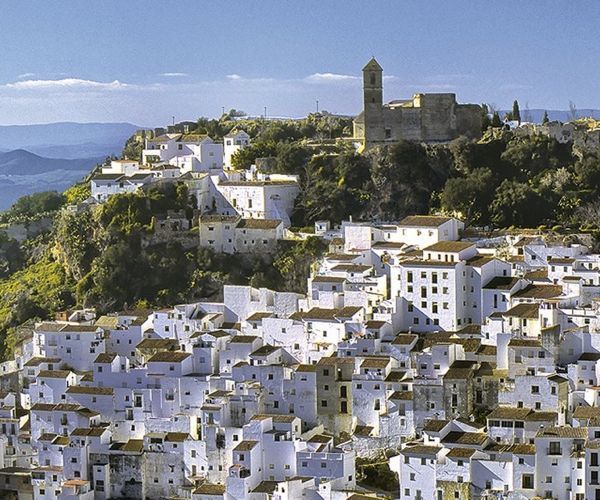 2. Comares
The village of Comares sits perfectly perched atop a craggy hilltop at almost 740 metres high, exposing amazing views to the Mediterranean sea and the surrounding mountains. It is, in fact, so easy to get lost in this labyrinthine village that ceramic footprints have been placed along the narrow cobbled streets to help visitors find their way. A wander around will reveal various plaques graphically explaining Comares’ rich history, dating to at least the 3rd century B.C. and including the handover of the village from the Moors to the Catholic Kings in 1487, plus numerous architectural sites also evidencing its Roman and Medieval past. Less than 25km from the coast, Comares is quite accessible though remains somewhat off of the typical tourist route, making it even more quaint and enjoyable.
2. Comares
The village of Comares sits perfectly perched atop a craggy hilltop at almost 740 metres high, exposing amazing views to the Mediterranean sea and the surrounding mountains. It is, in fact, so easy to get lost in this labyrinthine village that ceramic footprints have been placed along the narrow cobbled streets to help visitors find their way. A wander around will reveal various plaques graphically explaining Comares’ rich history, dating to at least the 3rd century B.C. and including the handover of the village from the Moors to the Catholic Kings in 1487, plus numerous architectural sites also evidencing its Roman and Medieval past. Less than 25km from the coast, Comares is quite accessible though remains somewhat off of the typical tourist route, making it even more quaint and enjoyable.
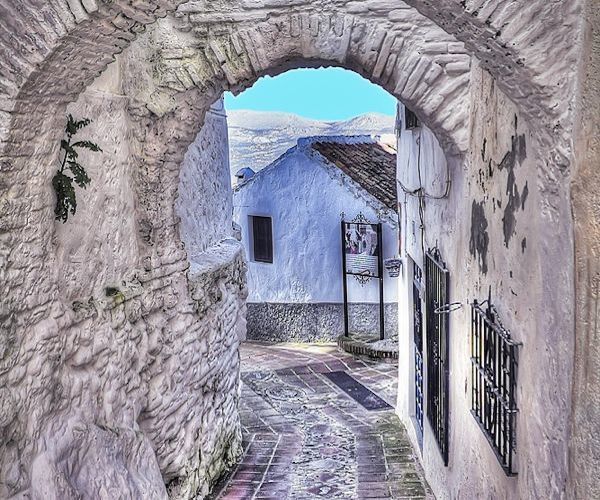 3. Canillas de Aceituno
Positioned on the slopes of La Maroma, the tallest mountain in the province at more than 2000m, and only about 10km from the sea as the crow flies, Canillas de Aceituno offers unique views and a calming atmosphere. The locals are friendly and welcoming to visitors, but not overly eager to develop tourism in a commercial capacity, keeping the village in touch with and connected to its past. For this it is all the more attractive to nature lovers and adventure seekers as well, with one of the primary trail heads leading from the village straight to the top of La Maroma and all through the expansive mountain nature reserve of the Sierra Tejeda. Although one of the final strongholds of the Moors in the region, evidence of the Moorish past in the village has largely been lost to time and conquest unless you know what to look for in the ancient aqueducts and water storage systems, hints of architectural remnants and the foundation of a long demolished castle. No visit to Canillas de Aceituno would be complete without sampling the roast kid, or “chivo lechal” for which the village is perhaps now most famous.
3. Canillas de Aceituno
Positioned on the slopes of La Maroma, the tallest mountain in the province at more than 2000m, and only about 10km from the sea as the crow flies, Canillas de Aceituno offers unique views and a calming atmosphere. The locals are friendly and welcoming to visitors, but not overly eager to develop tourism in a commercial capacity, keeping the village in touch with and connected to its past. For this it is all the more attractive to nature lovers and adventure seekers as well, with one of the primary trail heads leading from the village straight to the top of La Maroma and all through the expansive mountain nature reserve of the Sierra Tejeda. Although one of the final strongholds of the Moors in the region, evidence of the Moorish past in the village has largely been lost to time and conquest unless you know what to look for in the ancient aqueducts and water storage systems, hints of architectural remnants and the foundation of a long demolished castle. No visit to Canillas de Aceituno would be complete without sampling the roast kid, or “chivo lechal” for which the village is perhaps now most famous.
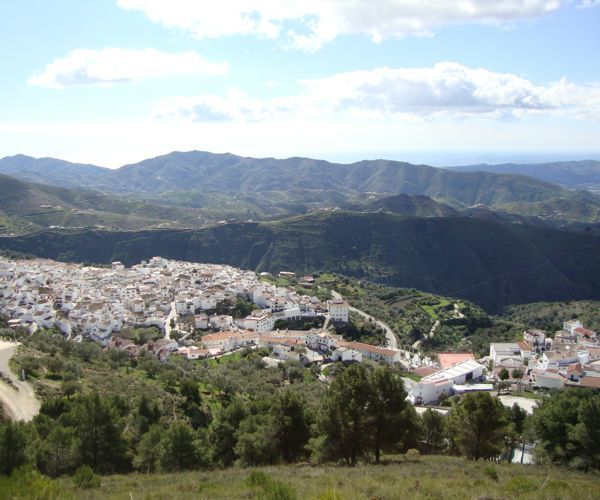 4. Frigiliana
The quintessentially Axarquian village of Frigiliana, in the eastern most region of Malaga, is aimless wandering at its best. The maze of narrow pedestrian streets may open unexpectedly onto a plaza suddenly teaming with life, or lead you into an apparent dead end only to reveal a cluster of shops and tapas bars. All the while you will marvel at the intricately designed stone pavements and the explosions of floral colour hanging from proudly adorned balconies, window ledges and doorways. Once voted “prettiest village in Andalucia” by the Spanish tourism board, a darker tale explains that here was the final savage defeat of the Moorish uprising in 1569. The remains of the old Arab fort lie in ruins atop the hill at the site of the final battle, but the Moorish influence is more visible throughout the village still today. The must-see annual August festival of the “Three Cultures” celebrates a happier time of cooperation between the Jewish, Christian and Islamic communities that lived harmoniously there for centuries, as well as the lasting cultural and culinary legacies of these three groups in Frigiliana and Andalusia more broadly.
4. Frigiliana
The quintessentially Axarquian village of Frigiliana, in the eastern most region of Malaga, is aimless wandering at its best. The maze of narrow pedestrian streets may open unexpectedly onto a plaza suddenly teaming with life, or lead you into an apparent dead end only to reveal a cluster of shops and tapas bars. All the while you will marvel at the intricately designed stone pavements and the explosions of floral colour hanging from proudly adorned balconies, window ledges and doorways. Once voted “prettiest village in Andalucia” by the Spanish tourism board, a darker tale explains that here was the final savage defeat of the Moorish uprising in 1569. The remains of the old Arab fort lie in ruins atop the hill at the site of the final battle, but the Moorish influence is more visible throughout the village still today. The must-see annual August festival of the “Three Cultures” celebrates a happier time of cooperation between the Jewish, Christian and Islamic communities that lived harmoniously there for centuries, as well as the lasting cultural and culinary legacies of these three groups in Frigiliana and Andalusia more broadly.
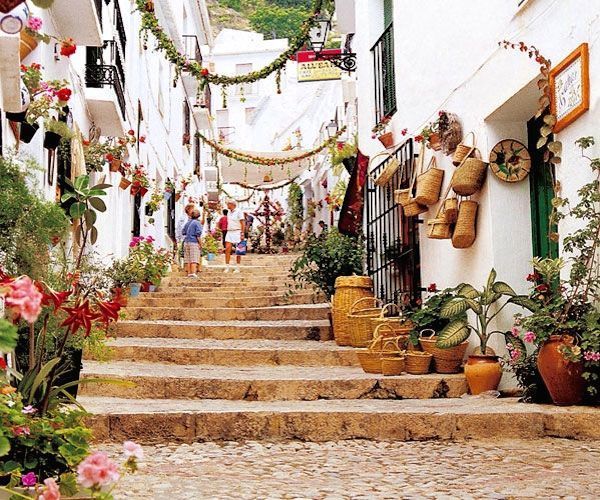 5. Maro
The coastal town of Maro is a wonderful example of a quaint Andalusian village that has not been spoilt by commercialism or the so-called progress of time. Maro sits just three kilometres from the popular and busier town of Nerja, offering virtually everything that Nerja offers, though without the same influx of tourists. The area was little known until 1959, when local youths discovered an expansive cave network complete with pre-historic cave paintings, and towering stalagmites and stalactites. Today the remarkable and jaw-dropping “Caves of Nerja” (belonging to Maro) are a major attraction for visitors, though most still never make their way into Maro itself.
5. Maro
The coastal town of Maro is a wonderful example of a quaint Andalusian village that has not been spoilt by commercialism or the so-called progress of time. Maro sits just three kilometres from the popular and busier town of Nerja, offering virtually everything that Nerja offers, though without the same influx of tourists. The area was little known until 1959, when local youths discovered an expansive cave network complete with pre-historic cave paintings, and towering stalagmites and stalactites. Today the remarkable and jaw-dropping “Caves of Nerja” (belonging to Maro) are a major attraction for visitors, though most still never make their way into Maro itself.
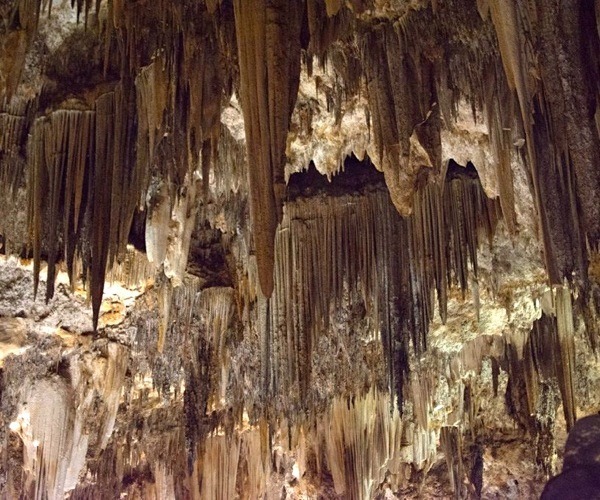 The old 16th century sugar works and the 19th century Aguila Aqueduct are also notable sites in Maro. To the east of Maro, the coast is perfectly natural and unspoilt with cliffs falling into the sea and intermittent secluded beaches providing a quiet and beautiful haven for those who know how to find them.
The old 16th century sugar works and the 19th century Aguila Aqueduct are also notable sites in Maro. To the east of Maro, the coast is perfectly natural and unspoilt with cliffs falling into the sea and intermittent secluded beaches providing a quiet and beautiful haven for those who know how to find them.
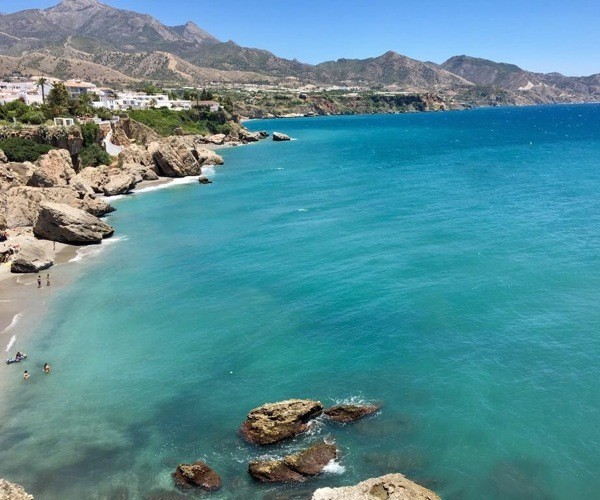 Alan Hazel is Owner and Director of Cortijo El Carligto. Cortijo el Carligto is a private Andalucían hideaway and luxury rental estate in the hills of Malaga, Spain, overlooking the Mediterranean.
If you would like to be a guest blogger on A Luxury Travel Blog in order to raise your profile, please contact us.
Alan Hazel is Owner and Director of Cortijo El Carligto. Cortijo el Carligto is a private Andalucían hideaway and luxury rental estate in the hills of Malaga, Spain, overlooking the Mediterranean.
If you would like to be a guest blogger on A Luxury Travel Blog in order to raise your profile, please contact us.Did you enjoy this article?
Receive similar content direct to your inbox.


We cycled here in February based in Torre Del Mar for 3 weeks, cycling to or through all theses beautiful villages, except Casares.
It’s a stunningly beautiful place in early spring with the almond blossom covering the hillsides and the orange trees laden with fruit.
The cycling was fantastic, quiet and perfect roads, we will be back next year.
I went to Southern Spain for the first time last year and fell in love with the many small, quaint towns along the coast. I plan to go back this summer with my son to explore a few more cities. Caseres was definitely on our list, but I will need to include a few more you have posted. It’s a trip I am very much looking forward to making!